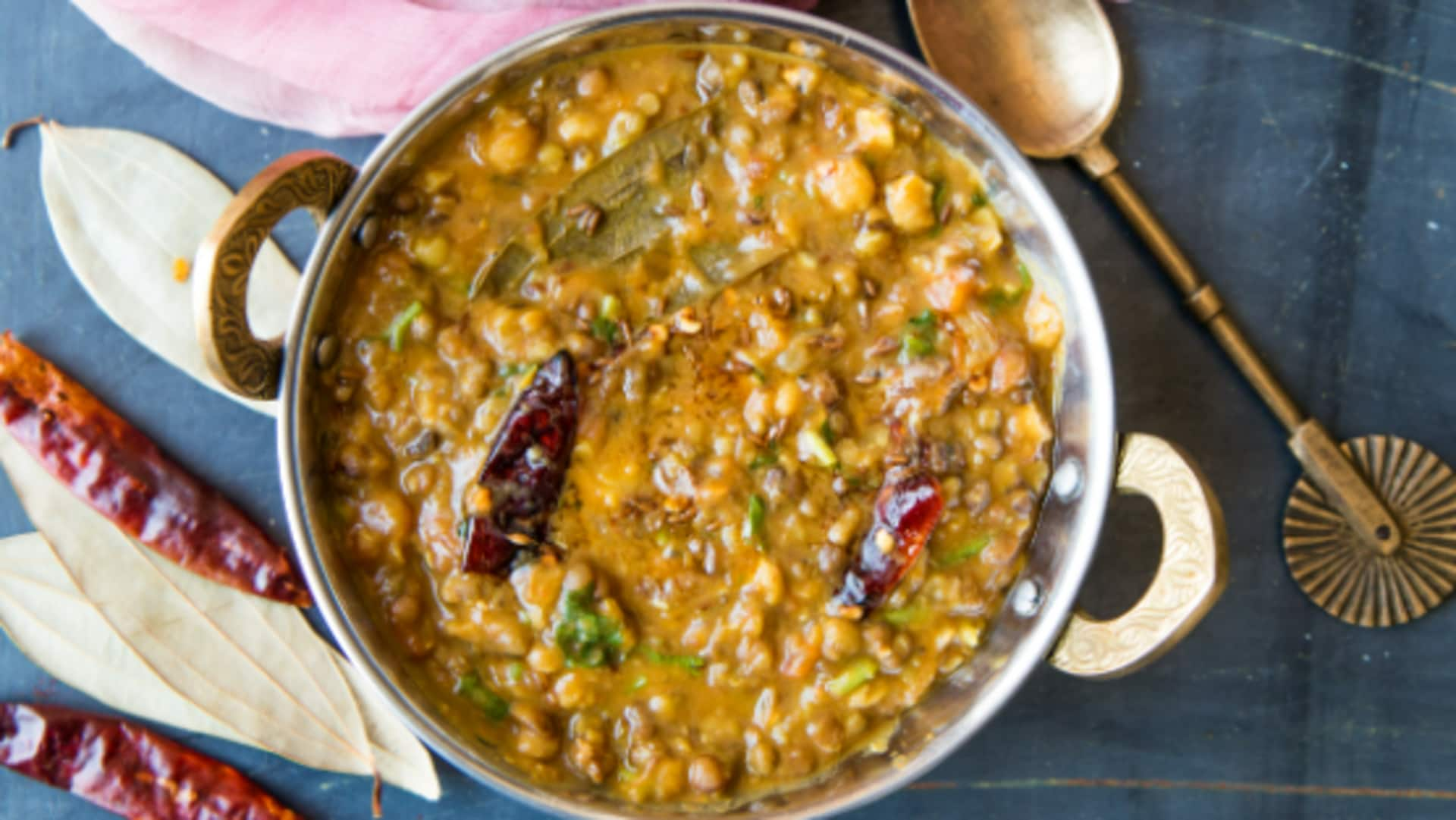
Panchtantra dal: A look at its cultural roots
What's the story
Panchratna dal, a beloved staple in Indian households, holds the secret to a perfect symphony of flavors.
This culinary masterpiece doesn't just tantalize your taste buds - it tells a story, a celebration of India's vibrant diversity and rich traditions woven into every bite.
Each lentil, with its distinct taste and nutrient profile, contributes to the harmony of this dish.
The result? A nutritious and soul-satisfying experience like no other.
Roots
Origins and cultural significance
The tradition of combining different lentils to create a single, harmonious dish goes back hundreds of years in Indian cuisine.
Panchratna dal (meaning "five jewels dal") is thought to have originated in the royal kitchens of Rajasthan or Gujarat.
High in protein and with a layered flavor profile, it was deemed a dish worthy of royalty.
Blend
Ingredients and variations
The five main lentils in panchratna dal are toor dal (split pigeon peas), chana dal (split chickpeas), moong dal (split mung beans), masoor dal (red lentils), and urad dal (black gram).
And, while these five lentils form the core of panchratna dal, some regional variations may incorporate different types of lentils or additional spices, catering to local culinary traditions and tastes.
Preparation
Cooking techniques
The process of making panchratna dal starts with soaking the lentils, and then cooking them until they are soft.
You then prepare a tempering (tadka) with ghee or oil, cumin seeds, garlic, ginger, onions, tomatoes, and a mix of spices, and add it to the cooked lentils.
This step is crucial as it imparts a burst of aromatic flavors to the dal, making it incredibly appealing and comforting.
Health
Nutritional value
Panchratna dal is not only delicious but also packed with nutrients.
By blending five lentils - toor dal, chana dal, moong dal, masoor dal, and urad dal - you get a high-protein, high-fiber meal loaded with vitamins B1 through B6, iron, potassium, magnesium, phosphorus, zinc, and copper.
This makes it the perfect meal for vegetarians looking for a protein boost.
Tricks
Culinary tips
To amp up the taste of panchratna dal even more, try adding a pinch of asafoetida when you're doing the tempering.
It gives a nice smell and also helps with digestion.
One more tip: right before serving, finish off with a squeeze of lemon juice. It takes the freshness factor to a whole new level.